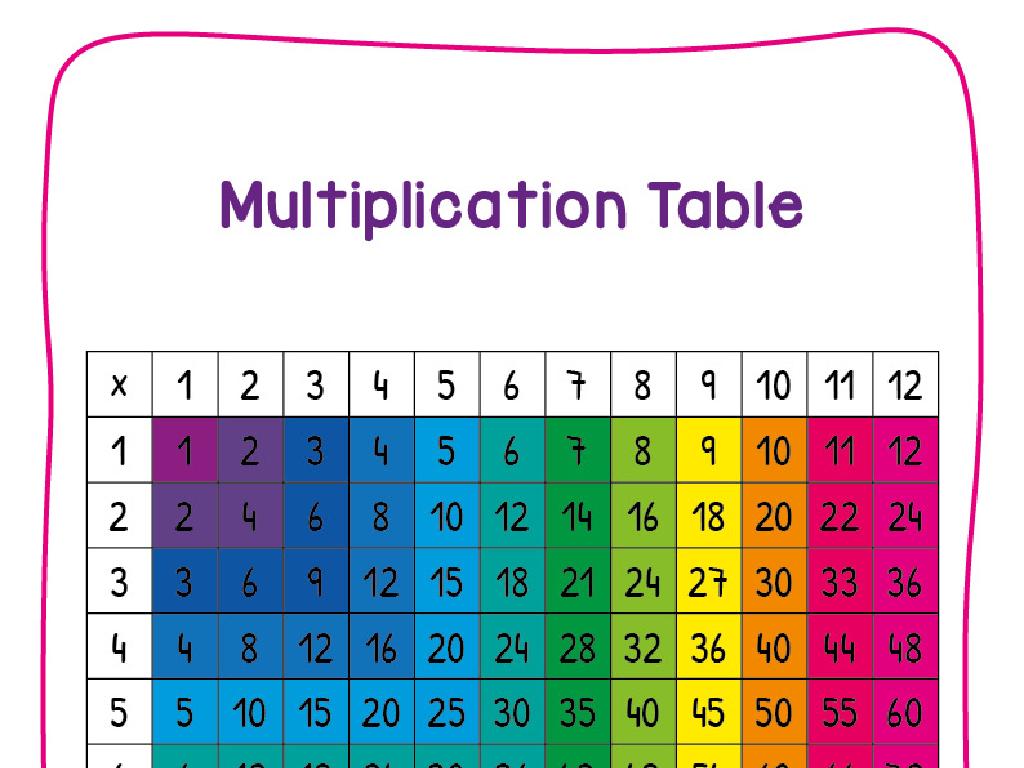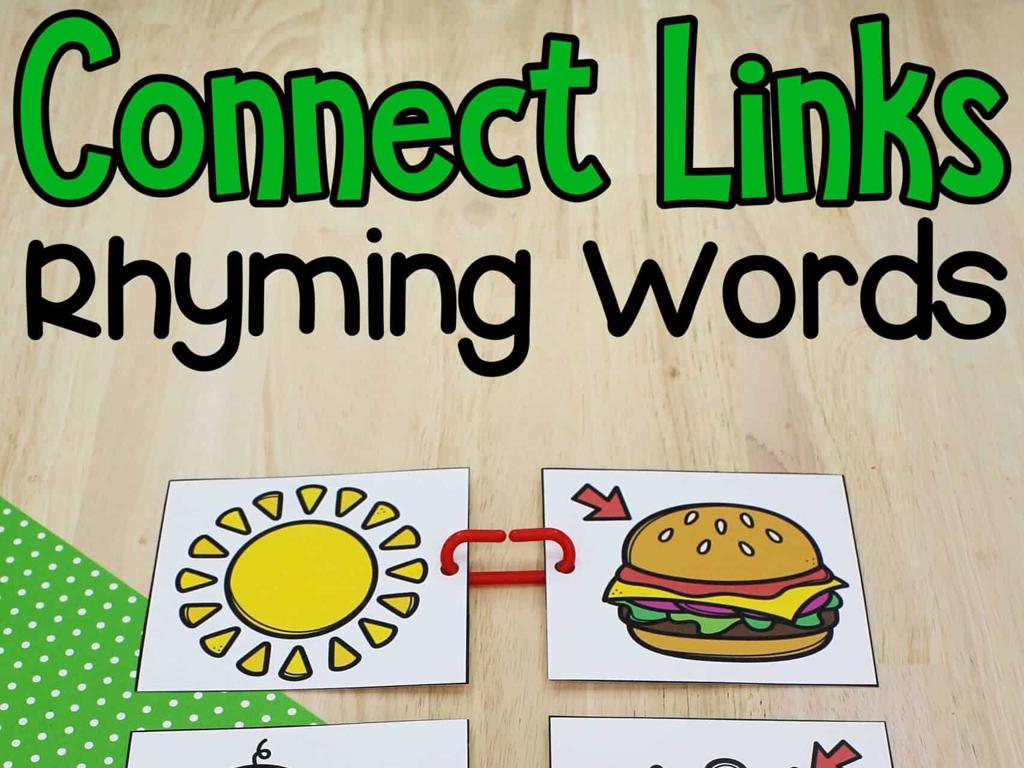Solve Percent Problems
Subject: Math
Grade: Sixth grade
Topic: Percents Of Numbers
Please LOG IN to download the presentation. Access is available to registered users only.
View More Content
Welcome to Percents!
– Understanding percents
– Percents represent parts of a hundred, like 25% is 25 out of 100.
– Percents, fractions, and decimals
– 50% is 1/2 or 0.5; they all show the same amount.
– Real-life percent applications
– Discounts, taxes, and tips are calculated using percents.
– Practice with examples
|
This slide introduces students to the concept of percents and their connection to fractions and decimals, which they are already familiar with. Start by explaining that ‘percent’ means ‘per hundred’ and show how a percent can be converted into a fraction or a decimal. Discuss how percents are used in everyday life, such as in calculating sales tax, discounts during shopping, and tips at restaurants. Provide examples for each case and encourage students to think of other situations where percents are used. Conclude with some practice problems to solidify their understanding.
Understanding Percents
– Percent means ‘per hundred’
– The percent symbol: %
– Convert fractions to percents
– To convert, multiply the fraction by 100 and add % symbol
– Convert decimals to percents
– Multiply the decimal by 100 and add % symbol
|
Begin the lesson by explaining that the word ‘percent’ comes from the Latin ‘per centum,’ which means ‘by the hundred.’ This is why percents are directly related to hundreds. Introduce the percent symbol (%) and explain its use in representing percents. Teach students how to convert fractions to percents by multiplying the fraction by 100 and then adding the percent symbol. For decimals, instruct them to multiply by 100 and again add the percent symbol. Provide examples such as 1/2 equals 50% and 0.75 equals 75%. Encourage students to practice with different fractions and decimals to become comfortable with these conversions.
Finding the Percent of a Number
– Understand the formula
– Use: Percent x Base = Amount to calculate
– Example: 25% of 200
– 25% of 200 is 0.25 x 200 = 50
– Practice: 10% of 50
– Calculate 10% of 50 as an exercise
|
This slide introduces the concept of finding the percentage of a number using a simple formula. Start by explaining the terms ‘percent’, ‘base’, and ‘amount’. Demonstrate with an example: To find 25% of 200, convert the percentage to a decimal (25% = 0.25) and multiply by the base (200), resulting in 50. For practice, students will calculate 10% of 50, which is a straightforward application of the formula (10% = 0.10, so 0.10 x 50 = 5). Encourage students to work through this problem and check their understanding. Provide additional practice problems with varying percentages and base numbers to solidify their skills.
Understanding Percents: Greater Than & Less Than 100%
– Percents greater than 100%
– Means more than the whole, e.g., 150% is 1.5 times the original
– Percents less than 100%
– Indicates a part of the whole, e.g., 75% is 3/4 of the original
– Examples of both scenarios
– 120% of a number, 80% of a number
– Non-examples to clarify
– 100% is the whole, not more or less
|
This slide aims to explain the concept of percentages in relation to the whole. When a percent is greater than 100%, it means that the amount is more than the total or original value. For example, 150% of a pizza would mean one whole pizza plus half of another. Conversely, a percent less than 100% indicates a portion of the total. For instance, 75% would represent three-quarters of the pizza. Provide clear examples such as 120% of 50 (which is 60), and non-examples like 100% of 50 (which is just 50) to help students differentiate between the two. Encourage students to think of real-life situations where they might encounter percentages greater or less than 100%, such as sales exceeding 100% of a sales target or a bottle filled to 70% of its capacity.
Using Proportions to Solve Percent Problems
– Setting up proportions
– Cross-multiplication technique
– Multiply across the known corners, divide by the third number
– Example problem
– If 15 is what percent of 50?
– Solving the example
– 15/50 = p/100, so p = (15*100)/50
|
This slide introduces the concept of using proportions to solve percent problems, a key skill in sixth-grade math. Begin by explaining how to set up proportions, where one ratio (part/whole) equals another (percent/100). Emphasize the cross-multiplication method, which involves multiplying diagonally across the ‘known’ numbers of the proportion and then dividing by the remaining number to solve for the unknown. Use the example ‘What percent of 50 is 15?’ to illustrate the process. Set up the proportion 15/50 = p/100, cross-multiply to get 15*100, and then divide by 50 to solve for p, which represents the percent. This gives us p = 30, meaning 15 is 30% of 50. Encourage students to practice with additional problems and ensure they understand each step of the process.
Discounts and Sales Tax: Applying Percents
– Calculate discounts using percent
– Determine sales tax on purchases
– Example: $50 shirt with 20% off
– Original price minus the discount (20% of $50 is $10)
– Find the final price after discount
– Final price is original price minus discount ($50 – $10 = $40)
|
This slide aims to teach students how to apply their knowledge of percentages to real-world scenarios such as shopping. Start by explaining how to calculate the discount by finding the percentage of the original price. Then, show how to add sales tax to the discounted price to find the total cost. Use the example of a $50 shirt with a 20% discount to illustrate the concept. The final price calculation will reinforce their understanding of percentages in a practical context. Encourage students to practice with different percentages and original prices to gain confidence in solving percent problems.
Solving Percent Problems: Tips & Tricks
– Calculate 10%, 20%, 50% easily
– To find 10%, move decimal one place left. For 20%, double the 10% value. For 50%, halve the number.
– Estimate percents mentally
– Round numbers before estimating to simplify calculation.
– Practice: Estimate 15% of 250
– What’s 15% of 250? First, find 10% (25), then find 5% (half of 10%), and add them.
|
This slide provides students with simple strategies to calculate and estimate percentages without a calculator. Emphasize the importance of understanding the concept of percentages as a part of a whole. Show them how to easily find 10%, 20%, and 50% of any number by using basic math operations. For mental estimation, teach them to round numbers to the nearest ten to simplify the process. Use the practice problem to apply these tips: to estimate 15% of 250, they should calculate 10% of 250, which is 25, then find 5% by halving the 10% value, which is 12.5, and then add them together to get 37.5. Encourage students to practice with different numbers to become proficient at estimating percentages.
Class Activity: Percent Scavenger Hunt
– Find classroom items with percents
– Calculate discounts on labeled items
– If a book is $20 and has a 10% discount, what’s the new price?
– Present your findings to the class
– Reflect on the activity
– Think about what you learned from this exercise.
|
This interactive activity is designed to help students apply their knowledge of percentages in a fun and engaging way. Set up the classroom with various items that have price tags and predetermined discount percentages. Students will search for these items and calculate the final price after the discount. Once they have completed their calculations, they will present their findings to the class, explaining how they determined the discounted prices. This will reinforce their understanding of percentages and provide practice in calculating discounts, a practical life skill. After the presentations, lead a discussion on how this activity relates to real-world shopping experiences. Possible variations of the activity could include calculating sales tax, finding the original price after a discount, or comparing discounts to determine the best deal.
Review and Q&A: Solving Percent Problems
– Recap today’s percent concepts
– Ask your questions now
– Let’s clarify doubts together
– Review with example problems
– For example, find 15% of 60.
|
This slide is meant to consolidate the learning from today’s lesson on solving percent problems. Begin with a brief recap of the key concepts covered, such as finding the percentage of a number and using percentages in real-life scenarios. Open the floor for students to ask any questions they may have, encouraging them to speak up about parts of the lesson they found challenging. Offer clarification on any points of confusion, possibly revisiting some of the examples used during the lesson. To reinforce understanding, work through additional example problems as a class, such as calculating discounts, tax, or interest rates. This interactive session will help ensure that students are comfortable with the material before moving on.
Homework: Mastering Percent Problems
– Practice solving percent problems
– Complete the assigned problems
Use the methods we learned in class to find percentages of numbers.
– Review and check your answers
Ensure to double-check your work for accuracy.
– Get ready for a quiz on percents
Study the examples and practice problems to prepare for the quiz.
|
This homework assignment is designed to reinforce the students’ understanding of percent problems. Provide them with a set of problems that require them to calculate percentages of various numbers, which will serve as good practice for the upcoming quiz. Encourage them to use the strategies taught in class, such as the proportion method or the percent equation. Remind them to review their answers carefully to avoid simple mistakes. To prepare for the quiz, they should revisit class notes, homework, and any additional resources provided. Offer to be available for any questions during office hours or before/after school for students who may need extra help.





